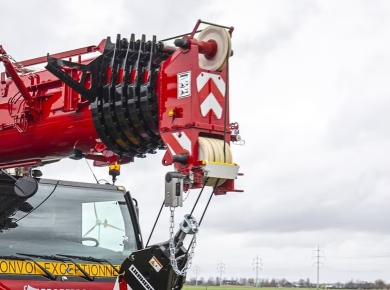Navigating the landscape of first aid certification can sometimes feel like walking through a maze, especially when weighing the merits of ASHI (American Safety and Health Institute) against the Red Cross. Both bodies offer valuable training programs, but their differences can significantly impact your decision depending on your professional needs in construction, health and safety, or site management. Having been deeply involved in the safety training sector for years, I’ve seen firsthand how these certifications play out in real-world scenarios, influencing everything from emergency preparedness to compliance with industry regulations.
Understanding ASHI and Red Cross Certifications
Both ASHI and the Red Cross have long-standing reputations in the realm of first aid and CPR training. ASHI is known for its focus on providing comprehensive training that emphasizes practical skills and real-world application. This is particularly critical in high-risk environments like construction sites, where immediate and effective response can mean the difference between life and death. The Red Cross, on the other hand, boasts a more widespread recognition and a robust network of training centers. Their courses often incorporate a broader range of topics, making them suitable for a variety of settings, from corporate environments to schools.
Choosing between the two often boils down to specific needs. If your primary concern is compliance with OSHA regulations or similar guidelines, it’s essential to consider which certification carries more weight in your industry. For instance, many safety professionals I’ve encountered swear by ASHI’s comprehensive approach when it comes to practical skills, especially for those who work in high-risk environments.
The Curriculum: A Side-by-Side Comparison
When comparing ASHI to the Red Cross, the curriculum is a significant factor. ASHI courses typically cover essential skills such as CPR, AED use, and first aid for various emergencies. The training is designed to be hands-on, with a focus on scenarios that professionals might actually encounter on job sites.
Conversely, the Red Cross offers a broader curriculum that includes mental health first aid and advanced first aid options. While this can be beneficial, some professionals feel that the additional breadth comes at the expense of depth in critical areas. In my experience, having a strong foundation in hands-on skills is often more valuable for those in construction and site management roles, where time is of the essence during an emergency.
Practical Application in the Workplace
The real test of any certification is its applicability in the workplace. During my time supervising construction sites, I’ve seen how training translates into real-life situations. One particular incident stands out: a worker collapsed on-site due to dehydration. Having a team certified in ASHI first aid allowed for a swift response—team members quickly assessed the situation, administered necessary first aid, and efficiently communicated with emergency services. The training they received was evident in their calm and coordinated response.
In contrast, I’ve witnessed situations where teams relying on certifications that lacked practical emphasis struggled in emergencies. Theoretical knowledge is valuable, but when seconds count, having hands-on training makes all the difference. ASHI’s focus on realistic scenarios is what I recommend for high-stakes environments.
Cost vs. Value: What’s on the Line?
Cost is often a significant consideration for businesses, especially in industries with tight budgets. While the initial investment in certification programs might seem daunting, it’s essential to weigh this against the potential costs of inadequate training. A single incident on a construction site can lead to hefty fines, increased insurance premiums, or worse—loss of life.
ASHI certifications may have a lower upfront cost, but if they translate into better preparedness and fewer incidents, the long-term value is undeniable. The Red Cross offers a wealth of resources, but this often comes with a higher price tag. In my experience, investing in the right training pays off in terms of both employee safety and organizational integrity.
Staying Current: Recertification and Continuing Education
Another critical aspect to consider is how each organization handles recertification. Staying current with first aid techniques is vital, especially as protocols evolve. ASHI provides clear guidelines for recertification, requiring participants to refresh their skills every two years. This ensures that your team remains adept in the latest practices.
The Red Cross also offers recertification but tends to include a more extensive curriculum update process. While this can be beneficial, it may not always align with the fast-paced nature of construction and site management, where refreshing basic skills efficiently is paramount. Regular training sessions can foster a culture of safety and preparedness, which is invaluable.
Real-World Challenges and Considerations
When it comes down to real-world challenges, both organizations have their strengths and weaknesses. The Red Cross’s extensive reach means they often have more training centers available, making it easier for employees to find a course that fits their schedule. However, ASHI’s focused curriculum can often lead to better-prepared teams, particularly in high-risk settings.
I recall a construction project where we needed to train a large crew on a tight deadline. The availability of ASHI trainers in our area allowed us to get everyone certified quickly without sacrificing the quality of training. This responsiveness to industry needs is something that ASHI excels at, making them a go-to choice for many professionals in construction and site management.
Conclusion: Making an Informed Choice
Ultimately, the choice between ASHI and the Red Cross comes down to your specific needs and the environments in which you and your team operate. Both certifications offer valuable training, but the emphasis on practical skills, cost implications, and the way they align with industry demands are crucial factors to consider.
In a field where lives depend on quick and effective action, investing in the right training program is non-negotiable. As you weigh your options, consider not only the certification itself but also how it fits within your organization’s safety culture and emergency preparedness strategy. The right choice can empower your team to respond confidently in critical situations, ensuring that safety remains a top priority on any job site.



